Fertilizing Tomatoes - Can You Overdo It?
What happens when you start fertilizing tomatoes every day? Here, you can see what happens to a plant that was given plenty of fertilizer, compared to one that hasn't received any fertilizer at all. Keep reading!
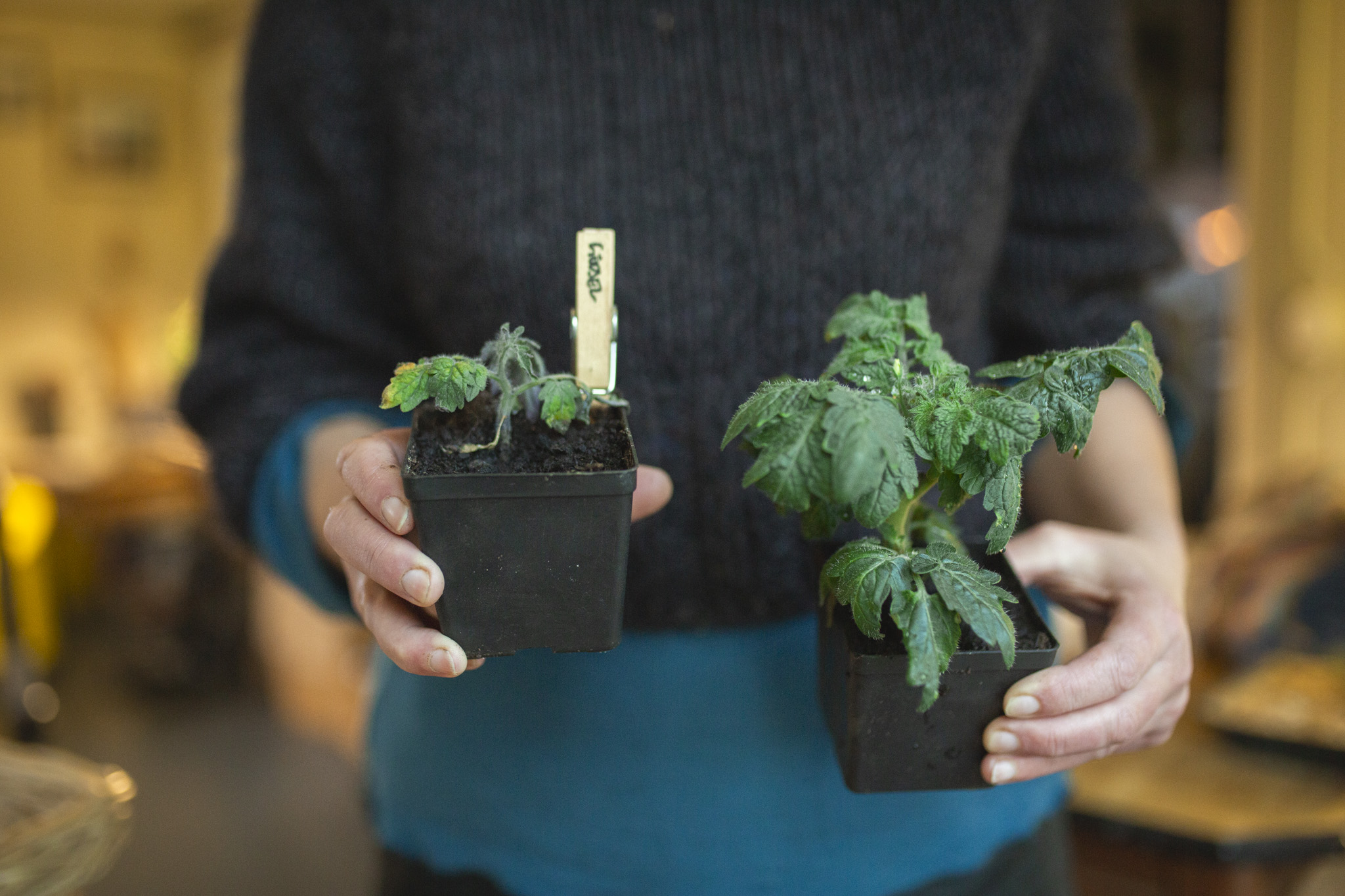
The left tomato plant was originally the same size as the one on the right. After consistent fertilization, it got severely damaged and is no longer growing. Keep reading to find out what happend when we start fertilizing tomatoes. Photo: Ida Sjöö.
Look, what a difference! One plant thriving, and another just days away from wilting completely. What happened? Well, I deliberately over-fertilized one of the tomato plants. It was fertilized far too early, with the purpose of showing you, my readers, how badly things can go when we start fertilizing our tiny plants and seedlings too soon.
Read more: How to grow early tonmatoes
The background to this post is that I always get questions about when it's time to start fertilizing your plants. Sometimes, posts on social media precede the questions, where followers happily share that they've started fertilizing and show their small and well-taken care of little plants. And/or they share pictures of clearly damaged ones that have been exposed to way too much fertilizer. I've occasionally raised the issue of premature fertilization but I agree that it's not easy to know when it's time to start fertilizing. It's ok to make mistakes and experiment, and I hope that this post can help you on the journey to start fertilizing tomatoes the correct way!
First of all, I want to emphasize that plenty of vegetable growers NEVER fertilize plants pre-cultivated indoors. It's worth considering as we kick off the season. Do we really need to fertilize as much as we think?
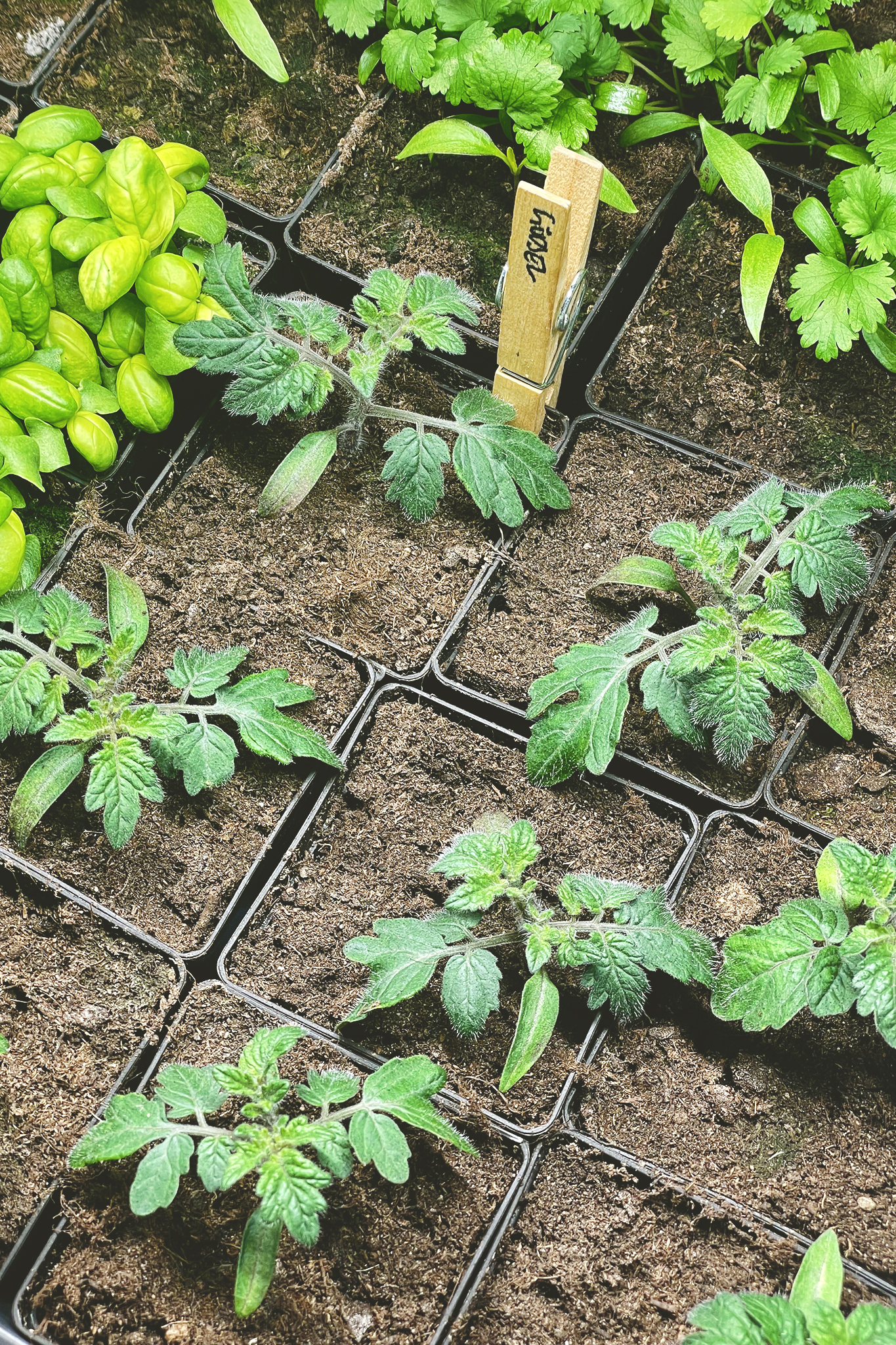
All the tomato plants here were recently transplanted when the experiment began in October 2023. A few days after transplanting, I needed to water, and the plant labeled FERTILIZER received a fertilizer in the water every time.
Fertilizing tomatoes every watering
In this experiment, I have consistently followed the dosage recommendation for vegetable crops, without considering the size of the plant, when it's time to get started or any other circumstances. So, I simply started adding a small amount of fertilizer every time to my repotted plants, as per the recommendations. I used a weak solution of water spiked with urine (which is an excellent all-around fertilizer - except for these particular plants, I'll explain more soon) and leachate from bokashi (also an excellent fertilizer at all other times). The plant labeled FERTILIZER has indeed been fertilized. The other plants have only received water and no nutrients or other fertilizer.
Right after the second or third round of fertilizer, the plant took a nosedive. The leaves where hanging and the plant didn't look half as good as its neighbors. After a little while, it even stopped growing all together. The leaves were hanging, the color faded and the first promising signs of buds withered away. Had I not been a fairly seasoned gardener, I might have turned to social media with my question – What went wrong? I mean, I was just following the rules, right? Where did things go south?
Read more: 4 Organic fertilizers for your garden
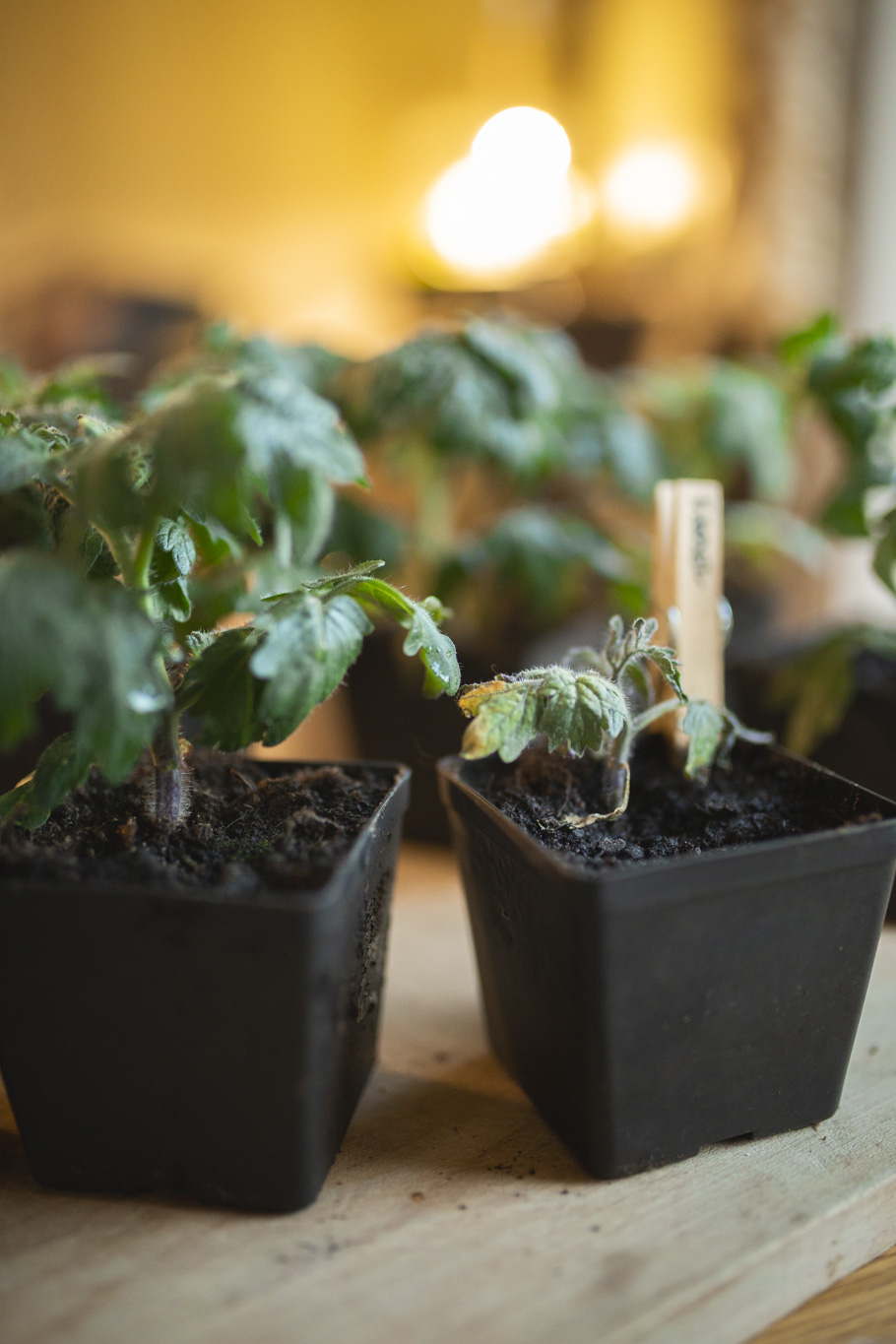
The two different tomato plants were sown and transplanted at the same time. The plants that haven't been fertilized have lovely little flower buds. Photo: Ida Sjöö.
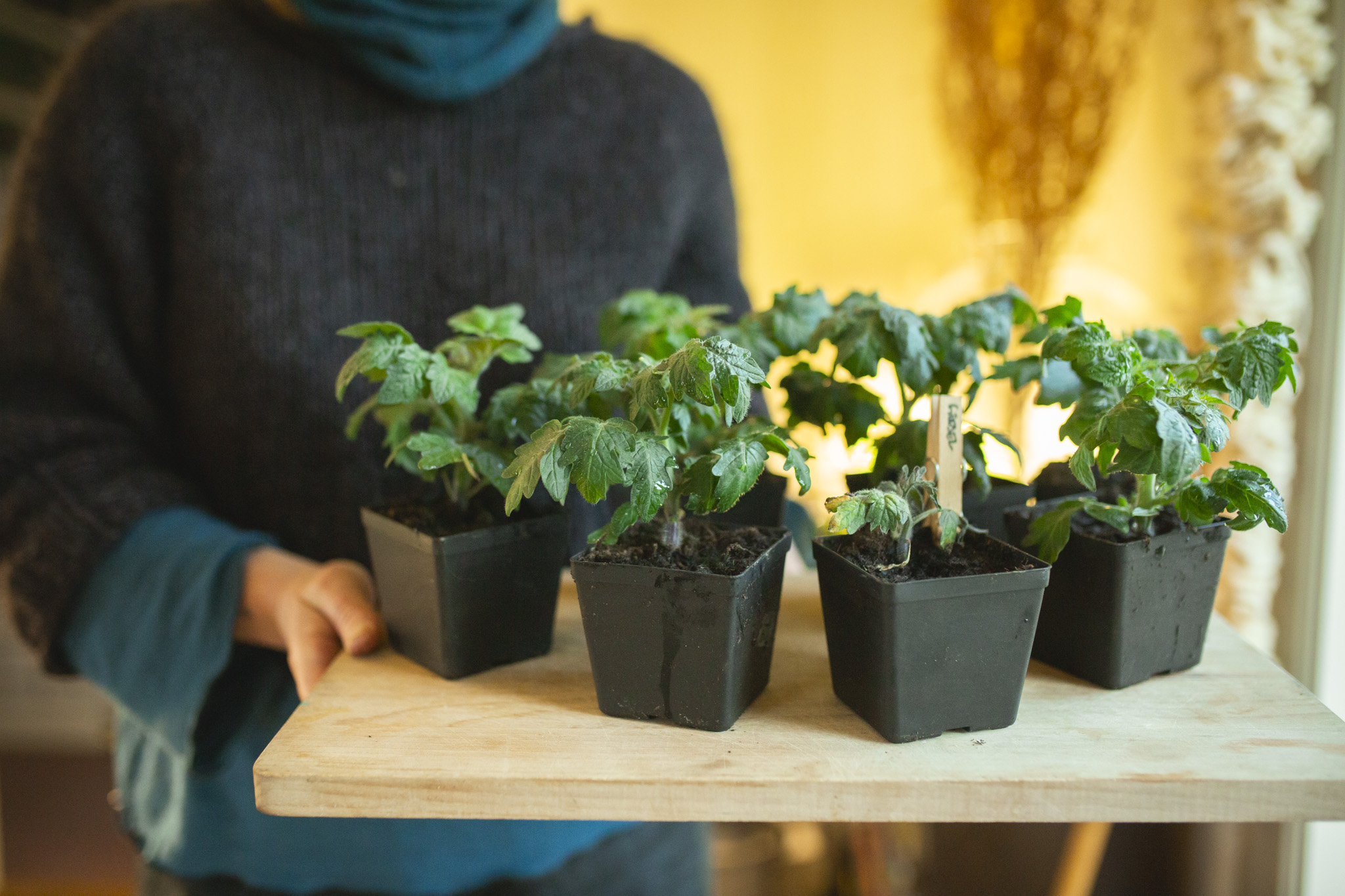
In total, I had eleven small seedlings of 'Venus'. Only the one that was fertilized was damaged. Photo: Ida Sjöö.
Fertilizing tomatoes when needed
A small plant is delicate. It hasn't had the time to build enough stamina to withstand adversity. The resilience grows with time. Everything the new little plant needs is already available in the seed and the surrounding soil, provided that everything is fairly balanced from the beginning. As the plant grows larger, it requires more from its environment. But anything that's a bit too much poses a risk to the plant: water, light, warmth, nutrients, pests, pruning, and similar.
We usually follow this formula when we pre-cultivate in pots:
- sowing in a small pot, with a small amount of soil (to not strain the plant in terms of energy, moisture, and similar.)
- transplanting to a larger pot with a larger amount of soil (when the plant is ready for it.)
- transplanting again to an even larger pot with more soil (when the plant fails to thrive in the previous amount of soil and shows signs of needing more space and nutrients.)
- while waiting for transplanting outside, we can fertilize to keep the plant in good condition (when the plant needs it.)
What many forget is that every time we transplant to a new pot, we provide the plant with new nutrients - through the soil. The plant will have depleted the nutrients in the old soil, which usually also happens when the old pot starts becoming a bit too small. When we transplant to a new pot, the plant receives plenty more nutrients through the soil. This nutrition lasts for several weeks, more or less depending on the type of plant we're growing and how much it needs of course. So, there's really no need for additional nutrients.
We fertilize when the plant shows clear signs that it needs more nutrients!
Read more: Cutting, pinching off and pruning tomato plants
A healthy and thriving tomato plant has green, fragrant, and relatively firm leaves. If the leaves are deep green, this is a sign that the plant has received a lot of nutrients. The leaves can become slightly curled too. When the leaves turn lighter green, leaning towards yellow, it's a sign that the plant needs more nourishment.
Sometimes, tomato plants develop purple leaves, usually more visible on the underside. This can happen when the plant struggles to absorb nutrients from the soil, for example in very cold or wet conditions. However, it's not always an indication that the soil lacks nutrients; it simply means the plant is unable to absorb or use them.
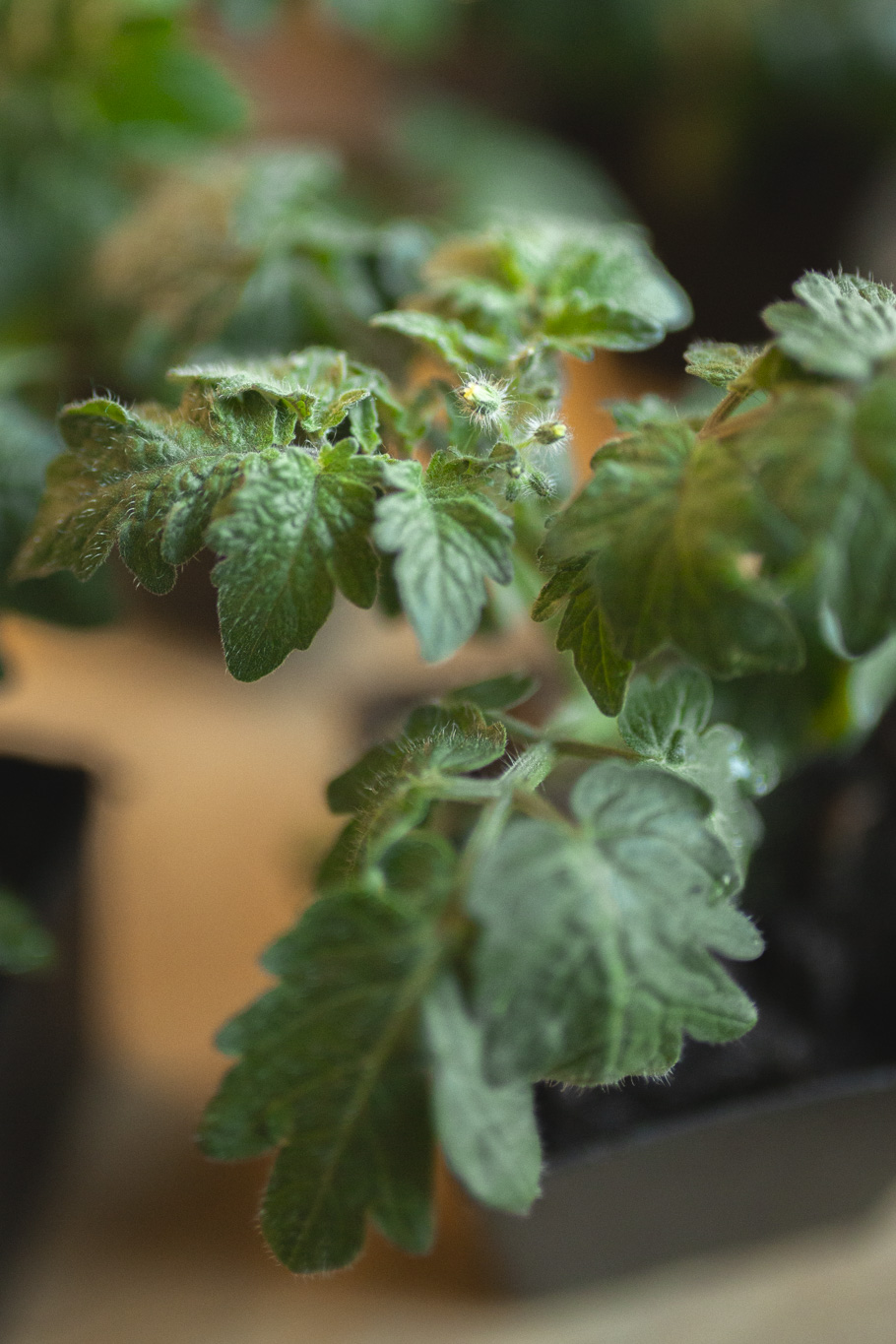
Lush, healthy plants with green leaves and several little buds – that's how a healthy tomato plant should look. Photo: Ida Sjöö.
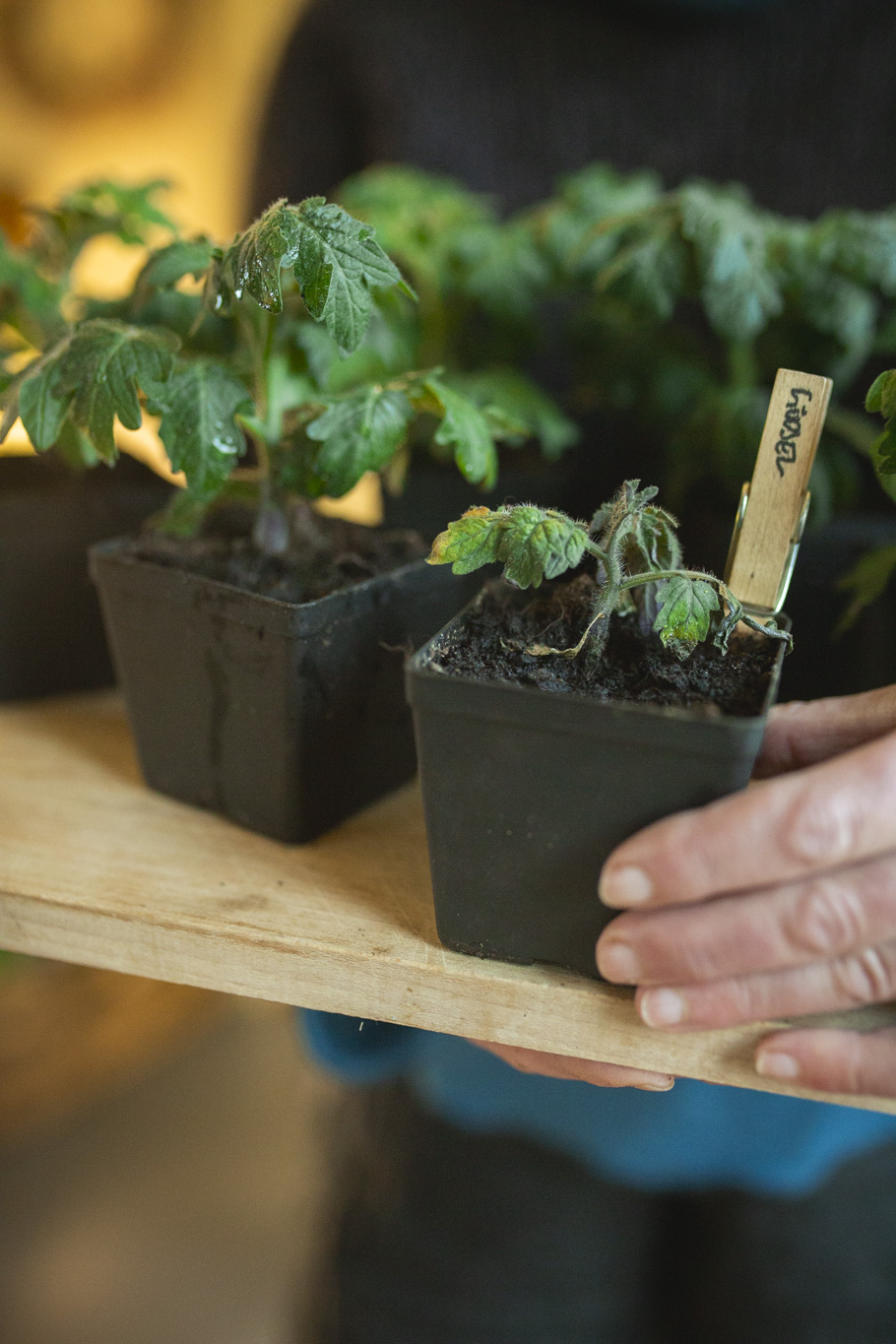
The risks of fertilizing tomatoes; The plant looks terrible compared to the others from the same batch. Poor thing! Photo: Ida Sjöö.
A small plant that is excessively fertilized in the early stages can suffer severe damage and is at risk of dying quite quickly. It can be difficult to recognize the signs of this, even for someone experienced. Everything appears fine after all, and you're kind and caring towards your plant. Yet, something goes wrong.
If you discover the damage early and draw the right conclusions, you might still be able to save the over-fertilized plants. You can stop fertilizing and hope for the best. Remove damaged plant parts and see if the plant can recover. Or, you can throw the miserable plant away and start over.
Read more: Companion planting corn and tomatoes
Remember that...
We fertilize our indoor plants so that they can stay in their pots for an extended period of time, where we can't add more soil that naturally contains more nutrients. This method can be necessary for peppers, artichokes, cabbage, tomatoes, chili, celeriac, leeks and other plants that we pre-cultivate indoors. But, fertilizer is usually only necessary after plants have been transplanted a few times. (They might need some extra help earlier though, if you want to keep your plants alive in a smaller container for a while without transplanting).
Even a recommended dose of fertilizer can be too much for a smaller plant. If you still believe your plant needs extra nourishment, it's a good idea to start with a very small dose first.
Too much fertilizer can be harmful to bigger plants too. They might start to grow plenty of leaves instead of flowers/fruits.
I also think that it's unnecessary to use a lot of fertilizer when the plants actually don't need it. It takes time and can cost a lot of money too!
Read more: Foccacia with orache and tomatoes
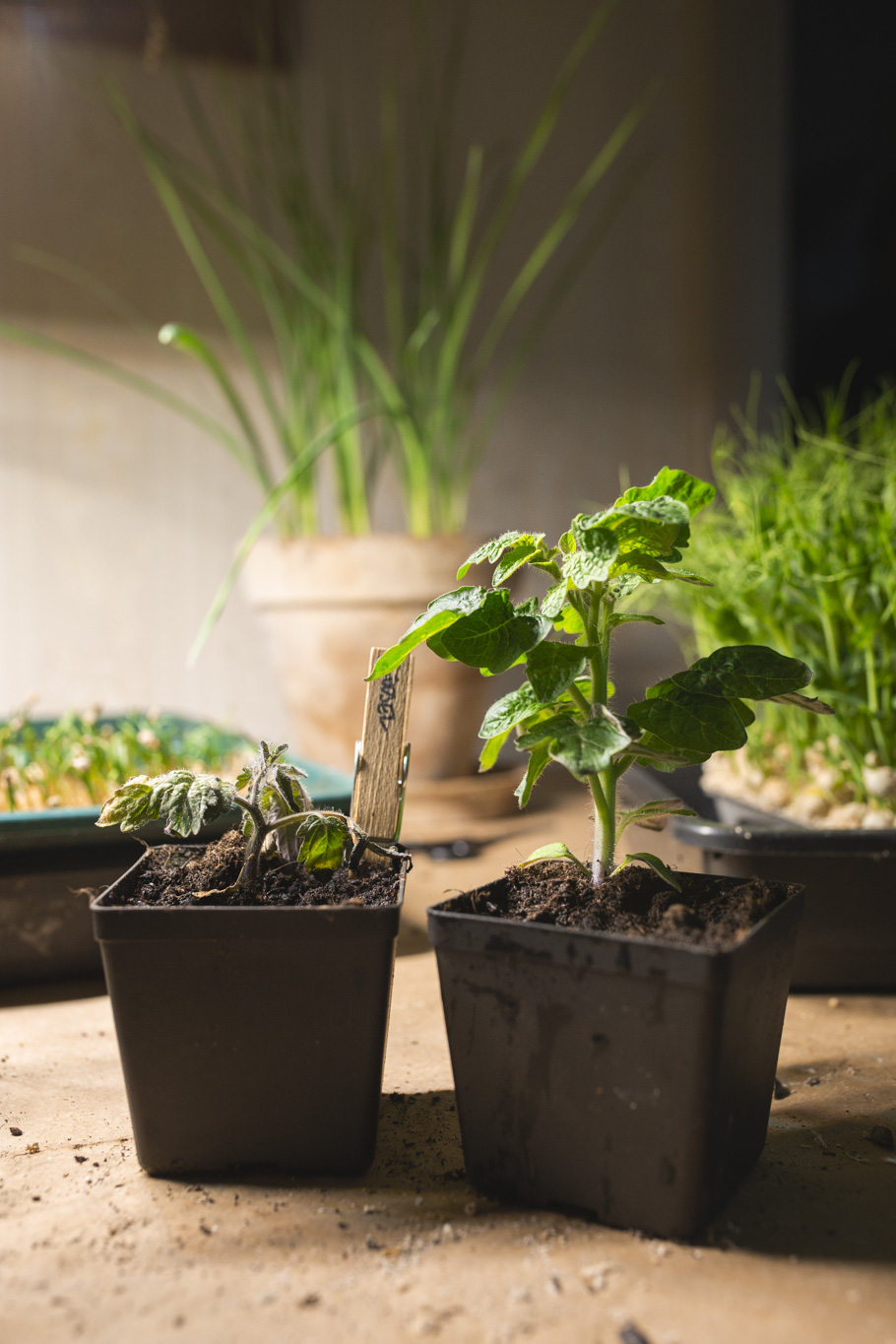
After photographing, I stopped fertilizing the sad little plant. But it was already too late, and a few days later, it was completely dead. Photo: Ida Sjöö.
As I mentioned earlier, some vegetable growers never fertilize their indoor plants in the pre-cultivation phase. If you start growing just a few weeks later, establishing a good routine for transplanting and moving the plants between different growing spots might be enough.
When I do fertilize, I typically use water diluted with a bit of urine as fertilizer, or a mild dose of bokashi leachate. I have very little experience with other fertilizers. I've just found them unnecessary when the method above works so well and doesn't cost a thing. This year, I plan to start fertilizing tomatoes and my indoor plants with fermented vegetable scraps (at the right time of course!) and see how that works.
Follow me on Youtube here: My channel
Unfortunately, the small tomato plant in the pictures above met didn't make it through the fertilizer chock. After these pictures were taken, I stopped fertilizing, but the plant still died. Hopefully, it served a purpose after all. I hope you found my experiment useful to your gardening projects at home!
/Sara Bäckmo
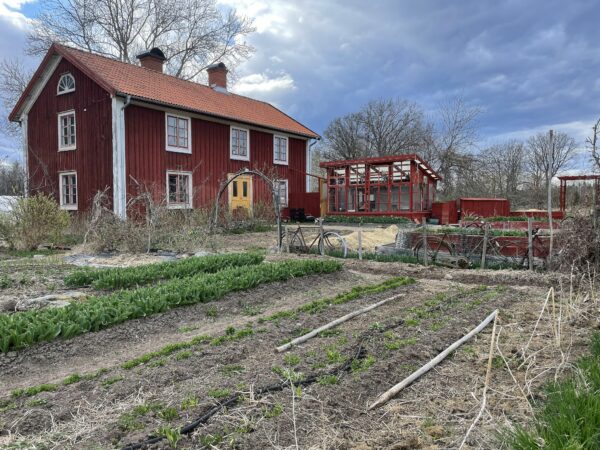
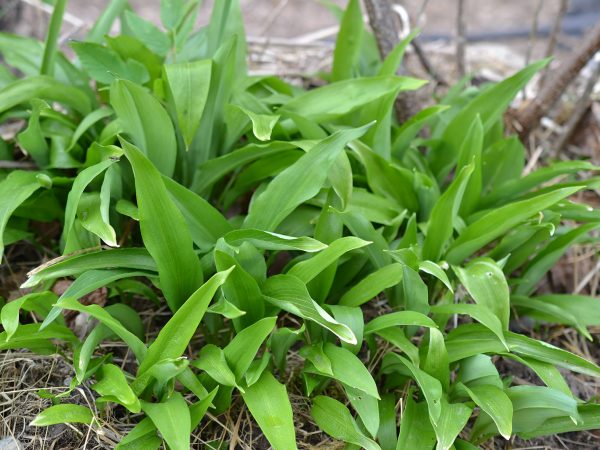
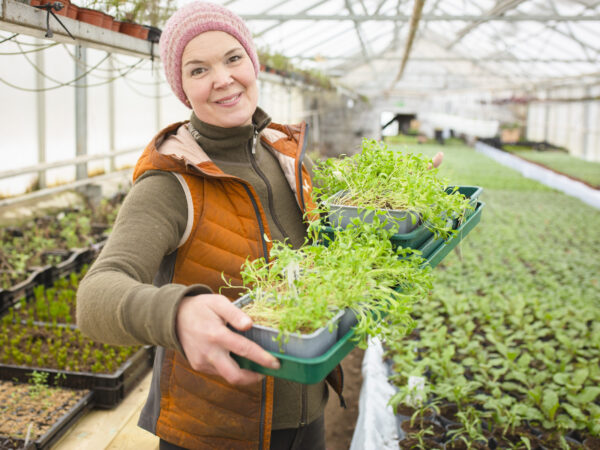
Leave a Reply